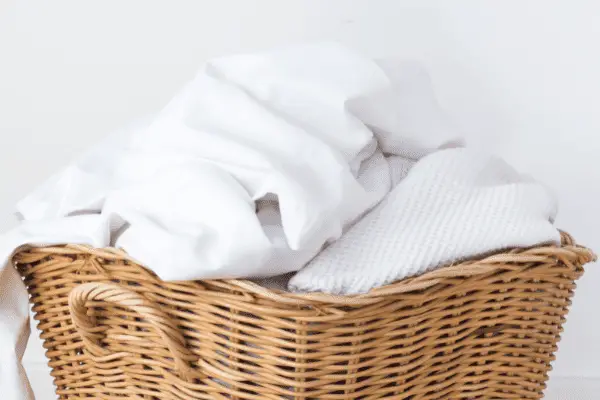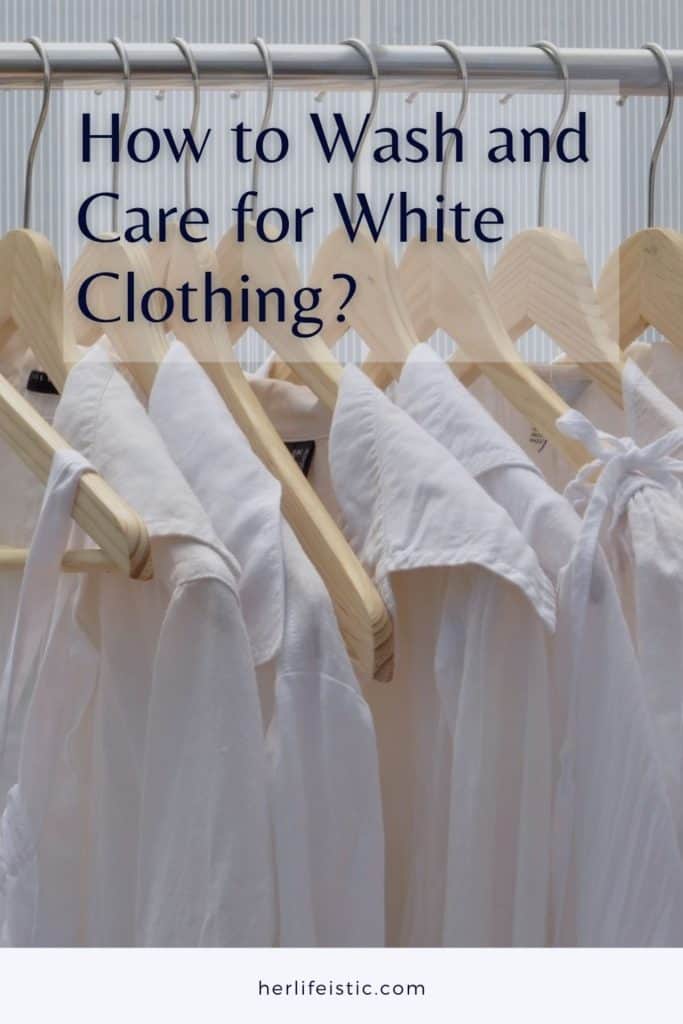*We earn a commission for products purchased through affiliate links on our site.
You could also read…
One of the most common problems for anyone looking to wash their clothes is how to keep their whites white. After all, for as vivid and bright as white clothing can be when it is new, it is also among the quickest colors to fade or become stained.
However, that doesn’t have to be the case. These tips can help you keep your whites whiter and brighter for longer and avoid that awful washed-out look.
Separate and Wash Whites Separately

First and foremost, you need to separate your different clothes into different batches. The one thing you absolutely cannot do if you want to keep your whites white lumps them in with darker clothes.
As anyone who has ever made the mistake of mixing light and dark clothes together knows, this is a recipe for disaster and colors bleeding into each other. Even if you have good detergent and washers that can cut down on this, it is still likely to happen. You thus need to make sure that you separate your different colors and wash whites separate from any other color.
Don’t Overload the Washer
If you’re reading this thinking that’s a lot easier said than done, you’re not alone. That said, you really need to try and avoid cramming the washer. Even if you avoid packing whites with other colors that can bleed onto them, doing so will result in less space for the clothing to move around when washed.
You may think that the washing is primarily based on the water (and we’ll get to that in a moment) but remember for a moment your washer’s “tumble dry” setting. A lot of the washing and drying that goes on in washers and dryers is due to the centrifugal force generated by them, which can knock dirt and particulates loose. If you overload the washer, this won’t be as effective.
Be Careful About Your Water Quality
You obviously need to be careful that you aren’t using murky water to wash bright clothing. At the same time, you can do better than just “regular” water. Ideally, you want to use water that is on the softer side. By contrast, if you use hard water, you may have a hard time getting your whites to stay white unless you use a water softener first. This is because hard water can contain or otherwise make use of minerals, which in turn can cause the whites to lose whiteness.
If the water has a high concentration of iron, you’ll want to use an iron remover, which you can find in many supermarkets’ laundry aisles. On the other hand, if you think chlorine bleach is the way to blast out any pollutants and leave your whites nice and pristine, you’re sadly mistaken. Chlorine, when added to hot water and iron, can cause clothing to yellow.
Optical Brighteners
Instead, you want to ideally find detergents that contain optical cleaners. They may not actually make your whites whiter, but they can do the next best thing and trick your eyes into thinking you have done so by bending ultraviolet waves of light. This can result in the blue light being more prominent than the yellow light, which in turn can make the fabric appear whiter when you or anyone else looks at them.
However, the “optical” element here needs to be stressed. This is an illusion, not reality, and isn’t the same thing as actually eliminating stains and whitening your whites or keeping them at their original degree of whiteness.
The Heat Dilemma
When washing your whites, you need to be especially careful with how much heat you use. Too little, and you run the risk of not being able to get out all the dirt and having it stay stained.
However, as is so often the case, the yellowing of whites represents a mistake in the process, and that’s once again the case here. If you apply too much heat to your whites, any residual soil still caked into the fabric can start to yellow, spoiling the whites along with it. That said, it is typically better to air on the side of caution and dry your whites on a lower setting that isn’t as hot as the higher levels.
In fact, if it’s warm and dry enough outside, you might consider air drying them on a clothesline, as this can be a bit more gentle on the delicate whites than your washer. The same holds true when ironing whites, as you’ll once again want to be careful to use lower heat settings on the iron.
Borax and Baking Soda Boost

Keeping your whites white means treating them with the right solution. Commercial fabric softeners can be too harsh or leave residue behind on your whites. Instead, consider treating them with one cup of distilled white vinegar. Both borax and baking soda can also be quite helpful in adding a boost of cleaning power and thus brightening your whites.
Dealing with Yellow
As has been made clear, when things go wrong with whitening whites, it often results in yellowing. If that happens, there are ways of reversing the process and saving your whites from a yellow-tinged fate. Cool water and oxygen bleach (rather than chlorine bleach) can help reverse yellowing, though you’ll want to be very careful to follow the instructions on the packaging so as not to add too much. You’ll want to allow your whites to soak for at least four hours, and stubborn cases may require overnight soaking. Once you’re done, drain them and wash them again as normal. Repeat this process until the white starts to show through the yellow once more.
Final Words
Keeping your whites white can be an arduous process. However, it doesn’t have to be a failed one. As long as you are diligent, you can keep your whites in good condition. Check the quality of your water, the heat at which you set your dryer, and the substances you use to clean them can all make a huge difference.








Comments are closed.